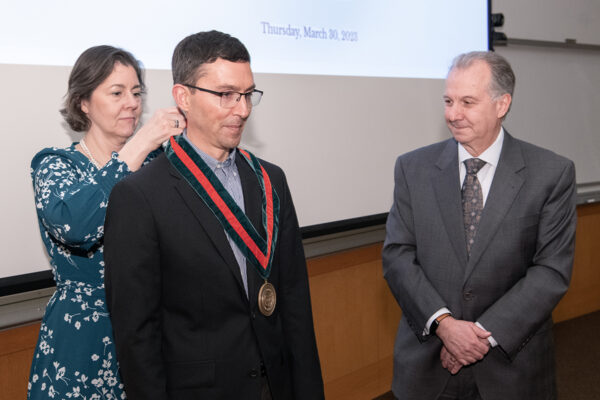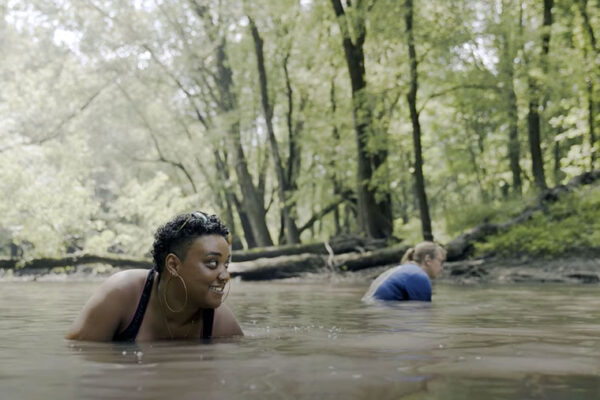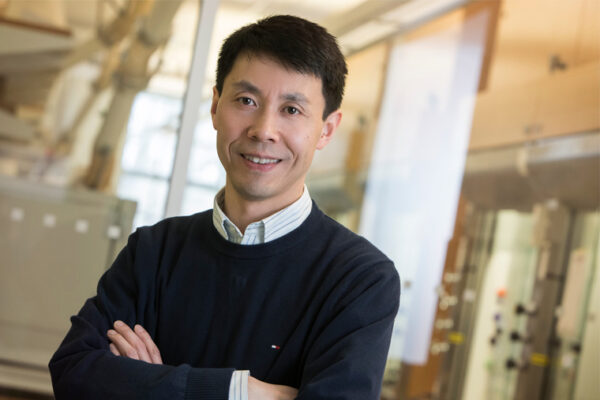Randall Martin named Raymond R. Tucker Distinguished Professor
Randall V. Martin, a world-renowned expert in atmospheric composition at the McKelvey School of Engineering, has been named the Raymond R. Tucker Distinguished Professor at Washington University in St. Louis. He was installed March 30 at a ceremony in Brauer Hall.
‘Mussel Grubbing’ video screened at World Water Film Festival
Mussels are the most imperiled freshwater animals in the United States. A short film documents a local mussels biodiversity project supported by the Living Earth Collaborative at Washington University in St. Louis.
Doing the math on a solar-powered future
Physicist Anders Carlsson in Arts & Sciences used 40 years of data from the St. Louis region to figure out the ideal mix of solar generation and storage for a reliable power grid.
Secret lives of salamanders
Scientists at Tyson Research Center are carefully tracking the timing of salamander breeding as part of a larger research effort examining the impacts of climate change on amphibians and plants.
Wang to study Arctic aerosols, their impact on climate change
Jian Wang, a professor and director of the Center for Aerosol Science and Engineering at the McKelvey School of Engineering, won a $766,552 grant from NASA for new research on Arctic aerosols. Wang aims to understand how aerosols impact Arctic climate change.
Carbon-negative concrete products to be formed from upcycled waste
With collaborators from Missouri University of Science & Technology and GTI Energy, Xinhua Liang at the McKelvey School of Engineering plans to develop an economical process to convert carbon dioxide and solid waste into carbon-negative concrete products.
Powering unmanned underwater vehicles
With a three-year $630,000 grant from the Office of Naval Research, researchers in the laboratory of Vijay Ramani at the McKelvey School of Engineering will develop, scale and test highly efficient unitized regenerative fuel cells to be used by the U.S. Navy.
What’s ahead for 2023
What changes and trends could we see this year? WashU experts in areas from artificial intelligence to climate to fashion share their insights.
2023 will be the year of the battery
Major advances in battery technologies will bring us a big step closer this year to large-scale renewable energy goals, international energy independence and a big reduction in greenhouse gases, according to Arts & Sciences’ Michael Wysession.
Nanoplastics produce unexpected reactions when exposed to light
A team of researchers led by Young-Shin Jun at the McKelvey School of Engineering analyzed how light breaks down polystyrene, the plastic from which packing peanuts and disposable utensils are made. They found that small plastic particles interact with neighboring substances more easily than previously thought, including with things like heavy metals and organic contaminants.
Older Stories









